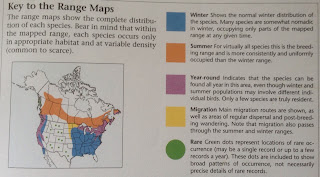I went for a short hike at Camden State Park, hoping to see one of my favorite birds, the Rose-breasted Grosbeak. It wasn't until near the end of my visit when I finally saw it. I managed to get some brief video footage of this White-breasted Nuthatch. Awesome! I hope you enjoy this video and some information from the Sibley Guide to Birds below. Thank you.
White-Breasted Nuthatch
Sitta carolinensis
Our largest nuthatch, this species is found in open woods with mature trees, most often oak and pine trees, where its nasal calls are heard frequently. Large with long, upturned bill. Relatively longer-winged than other nuthatches; short, broad tail.
Nuthatches are short-tailed and long-billed with a unique tree-climbing method; they often climb head down, feeding on insects gleaned from bark crevices. Nuthatches nest in cavities. Flight of all species is undulating, similar to woodpeckers. The smaller species often join flocks of chickadees, warblers, and other small birds during non-breeding season.
Nuthatches climb trees using only their strong legs and feet: one foot is placed lower and used as a fbrace; the other foot is placed higher and grips the bark. A similar climbing method is used by Black-and-white Warbler and, to a lesser extent, Yellow-throated Warbler. In contrast, all woodpeckers and Brown Creeper use their tails as a brace and incapable of climbing head down.
Voice: Songs of all populations have a series of soft, slightly nasal, whistled notes on one pitch whi-whi-whi-whi-whi-whi-whi. All give short, nasal contact calls and soft, high ink notes while foraging. Eastern: Call a nasal yenk or renk slightly descending; often slightly trilled or rolling, unlike Red-breasted; lower, coarser when agitated. Interior West: Call a short series of rapid, nasal notes yididididi often grouped in twos or threes yidi-yidi-yidi-yidi or yididi-yididi-yididi, all with equal emphasis. Pacific: Call a high, nasal yelping eeernor beeerf distinctly longer, higher, harsher than Eastern; quiet contact notes huskier than Eastern.
Three populations differ in voice and subtly in plumage and shape. Eastern has thickest bill and palest gray back with sharply contrasting black marks on tertials and coverts. Eastern also has a broader dark crown-stripe than either of the western populations. Pacific and Interior West both have thinner bills, darker gray backs with less contrasting dark marks on tertials and coverts, and narrower dark crown-stripes. Interior West differs from Pacific in darker back and much darker flanks. Voice differs between populations; all should be reliably identified by call. Song differs subtly between populations; more study is needed.
Works Cited
Sibley, D. A. The Sibley Guide to Birds. New York City: Chanticleer Press, Inc. (2000): 381.


No comments:
Post a Comment